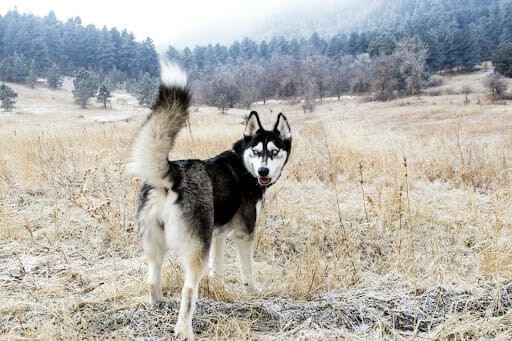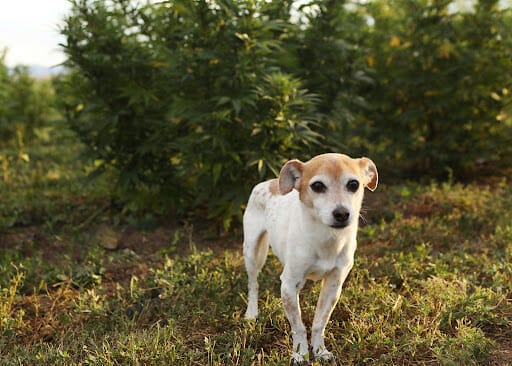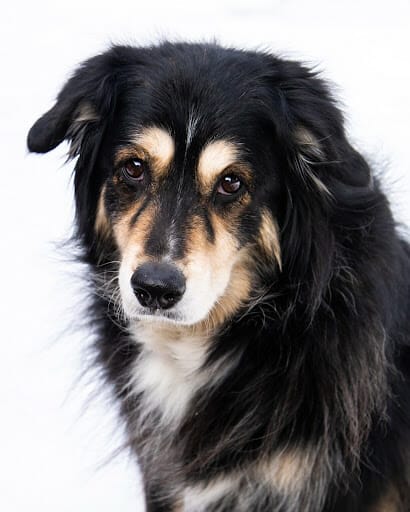
Dogs are incredibly social animals, and they communicate with each other and with humans through body language. Unfortunately, many pet owners are not familiar with the signs of stress in dogs, which can lead to misunderstandings and even dangerous situations. In this article, we will explore stressed dog body language, the common triggers of stress in dogs, and how to help your dog manage and overcome stress.
What is Stress in Dogs?
Stress is a natural response to a perceived threat or challenge, and it can be beneficial in small doses. However, chronic stress can have negative effects on a dog’s physical and mental health. In dogs, stress can manifest itself in a variety of ways, including changes in your dog’s behavior, appetite, and body language.
Reading Dogs’ Body Language: Physical Signs of Stress in Dogs
It’s essential to understand the physical signs of stress in dogs to avoid potentially dangerous situations. By interpreting body language, dog owners can learn a dog’s stress signals. Here are some common body language signals that your dog may be stressed:
- Posture: Body may be low to the ground with weight more on hind legs than front.
- Tail tucked: If your dog is tucking their tail between their rear legs, it may be a sign of stress. Dogs may tuck their tails when they feel stressed or submissive. A fearful dog may also exhibit this behavior.
- Ear position: If your dog has flattened ears that are leaning tight against their head, it may be a sign of stress or fear.
- Dilated pupils: Dogs’ pupils dilate when they are excited or stimulated, but they also dilate when they are stressed or scared. If your dog’s pupils are dilated, it may be a sign that they are feeling stressed.
- Eye Contact: You may only be able to see the whites of their eyes; a term often referred to as ‘whale eye’ You may also notice your dog’s gaze as your dog freezes their sight on a person, other dogs, unfamiliar dogs, or objects.
- Mouth: Tight lips on a dog indicate that the dog is tense, nervous or agitated. A dog that is relaxed will have loose lips, but when the dog becomes stressed or worried, they may have a tight mouth
- Fur standing on end: Raised hackles dogs are a sign of aggression in dogs. They are a type of warning signal, which is often used by dogs to indicate that they feel threatened or under attack.
Behavioral Changes in Stressed Dogs
In addition to stressed canine body language, you may also notice stressed dog behavior, including:
- Aggression: Dogs may become aggressive when they are stressed, fearful, or stressed. Aggressive body language is displayed when your dogs growl, begin snarling, or biting, it is a clear sign that they are feeling threatened. Allow your dog to have some personal space during this time.
- Changes in Appetite: Stress can cause changes in a dog’s appetite. They may lose interest in their food or, conversely, start to overeat. Vomiting, diarrhea, or constipation can also be signs of stress.
- Drooling: Like panting, drooling is a common sign of stress in dogs. If your dog is drooling excessively or has a wet mouth, they may be feeling stressed.
- Panting: Dogs pant to cool themselves down when they are hot, but they also pant when they are stressed. If your dog is panting excessively, it may be a sign that they are feeling stressed or uncomfortable.
- Licking or Chewing: When dogs are stressed, they may excessively lick or chew on their paws or other parts of their body. This behavior is known as “self-soothing” and can be a sign of stress or discomfort.
- Increased Urination: Dogs may urinate more frequently or in inappropriate places when they are stressed. This behavior is known as “stress marking” and can be a sign of stress or fear.
- Shaking: If your dog is shaking, it may be a sign of stress. However, dogs also shake when they are excited or happy, so you need to look at the context to determine the cause of the shaking.
- Yawning: Dogs yawn when they are tired or bored, but they also have a stressful yawn. If your dog is yawning excessively or out of context, it may be a sign that they are stressed or uncomfortable.
- Pacing: Dogs may pace when they are stressed, especially if they feel trapped or confined. If your dog is pacing back and forth or in circles, it may be a sign that they are feeling stress.
- Lip licking: Dogs exhibit lip licking behavior when they’re stressed, nervous. If your dog is licking their lips excessively or out of context, it may be a sign that they are feeling stressed.
- Tail wagging: Tail wagging is often associated with a happy dog, but dogs who are extremely stressed or stress may also wag their tail. You must look at body language as a whole to determine how your dog is feeling when they’re wagging their tail.
- Paw lift: Some tense dogs may lift their paw when feeling stressed.
Common Triggers of Stress in Dogs
Now that you know what a stressed dog looks like and how their behavior changes, it’s time to determine what is triggering them. Ask yourself if your dog has experienced any of the following situations:
- Separation: Separation fear is a common cause of stress signs in dogs. When their owners leave, dogs may experience intense fear and stress, leading to destructive behavior, excessive barking, and other signs of stress.
- New Environments: Dogs may become stressed when they are introduced to new environments, such as when they are taken to the vet, groomer, or boarding facility. The unfamiliar smells, sounds, and people can be overwhelming and cause stress.
- Loud Noises: Loud noises, such as thunderstorms, fireworks, and construction, can be extremely stressful for dogs. They may become frightened and display avoidance behaviors or become aggressive.
- Changes in Routine: Dogs thrive on routine, and changes to their routine can cause stress. For example, a change in feeding schedule or exercise routine can lead to stress.
- Illness or Injury: Dogs may become stressed when they are sick or injured. They may display signs of discomfort, such as panting or whimpering, and may become irritable or aggressive.
- Trauma or Abuse: Dogs that have experienced trauma or abuse may be prone to stress. They may exhibit fearful or aggressive behavior, and may have difficulty trusting people or other animals.
- Lack of Socialization: Dogs that have not been socialized properly may experience stress in new situations or around new people or animals. They may become fearful or aggressive and have difficulty adjusting to new environments.
- Overstimulation: Dogs may become stressed when they are overstimulated. This can happen when they are exposed to too much noise, activity, or stimulation, and can lead to stress and avoidance behavior.
- Lack of Exercise: Dogs that do not receive enough exercise may become stressed and fearful. Regular exercise can help reduce stress and promote relaxation.
Identify the Trigger
The first step in helping your stressed dog is to identify the trigger of their stress. Once you identify the trigger, you can take steps to help your dog feel more comfortable. Depending on what the trigger is, you may have to make some adjustments. However, the following recommendations are a good place to start.
Create a Safe Space
Creating a safe space for your dog can help them feel more secure and reduce their stress levels. This can be a room in your house, a crate, or a comfortable bed. Make sure the space is quiet and free from any potential stressors, such as loud noises or other pets. You can also add familiar items, such as their favorite toys or blankets, to help them feel more comfortable.
Exercise and Mental Stimulation
Regular exercise and mental stimulation can help reduce stress in dogs. Make sure your dog gets plenty of exercise, such as walks, runs, or playtime in the backyard. Mental stimulation can come in the form of puzzle toys, interactive games, or obedience training. This can help tire your dog out mentally and physically, reducing their stress levels.
Relaxation Techniques
Just like humans, dogs can benefit from relaxation techniques such as massage, acupuncture, or meditation. You can also try deep breathing exercises with your dog. Take deep breaths in and out while holding your dog, encouraging them to take deep breaths as well. This can help both you and your dog feel more relaxed.
Modify the Environment
If your dog is stressed by a particular environment, you can try modifying it to make it more comfortable for them. For example, if your dog is stressed by loud noises, you can try playing soft music or using a white noise machine to drown out the noise. You can also try using curtains or blinds to block out any external stimuli, or providing a comfortable bed or crate.
How to Tell Your Dog is Calm
If you’re trying to determine if your dog has calmed down using the techniques you have employed, you need to understand what a calm dog’s body language looks like. Once your dog is calm, you should notice most or all of the following:
- Body Posture: A relaxed dog will have a relaxed body posture. Their body will be loose, and they will not be tensed up or hunched over. Their tail will be relaxed and may be wagging slowly.
- Soft Eyes: A calm dog will have soft, relaxed eyes. Their pupils will be normal-sized, and they will not be staring intensely. The corners of their mouth may be slightly upturned in a contented expression.
- Ears: A relaxed dog’s ears will be in a neutral position, neither upright nor flattened against their head. They may have ears forward, indicating alertness, but will not be pinned back against their head.
- Slow, Smooth Movements: A relaxed dog will move slowly and smoothly, without any sudden or jerky movements. Their movements will be deliberate and relaxed.
- Panting: A calm dog may pant gently and slowly. They will not be panting heavily or rapidly, which can be a sign of fear or stress.
- Sitting or Lying Down: A calm dog may sit or lie down in a relaxed position. They will not be pacing or constantly moving around.
- Seeking Affection: A calm dog may seek affection from their owner. They may nudge their owner’s hand or lean against them for pets or cuddles.
- Playfulness: A calm dog may engage in playful behavior, such as a wagging tail, displaying a play bow, or bringing toys to their owner.
- Facial muscles: Your dog’s facial muscles will appear relaxed.
Helping Your Stressed Dog Using Full-Spectrum Hemp Extract
Full-spectrum hemp extract can also be beneficial to your stressed dog. By helping reduce the effects of normal environmental stress, full-spectrum hemp extract can help your dog maintain a normal and relaxed disposition. It may also reduce hyperactivity. Additional benefits include:
- Helps maintain contentment during separation, travel, motion sickness and tension caused by changes in your pet’s daily routine
- May help curb destructive behavior
- Be useful for behavioral problem management
Earth Buddy offers a Full-Spectrum Hemp Extract product for dogs that is grown in small batches on an organic farm in Longmont, Colorado, with minimal processing. The hemp from Earth Buddy is always single-origin without a third party. This way, you know where the product comes from, and the company knows exactly how it is grown.
Seek Professional Help When Necessary
When evaluating body language, it’s important to look at your dog’s signals, the stress indicators discussed above, and body postures. Take a look at your dog’s entire body as a whole rather than looking solely at one part. Don’t base how they’re feeling solely on your dog’s tongue, for example. Instead, look at each part of their body to determine their emotional well-being.
If your dog’s stress levels are severe or if they are exhibiting aggressive behavior, it’s important to seek professional help from a veterinarian or a certified dog behaviorist. They can help identify the cause of your dog’s stress, identify all ways dogs communicate, and provide a customized behavior modification plan to make your dog feel more comfortable.
For further reading, we recommend:
You Might Also Enjoy
Your dog’s skin is their largest organ making dog skin care a crucial part of…
Like us, our dogs, and other mammalian species, cats have an endocannabinoid system. This system…
Learning how to calm a dog down is an essential skill to have in your…












